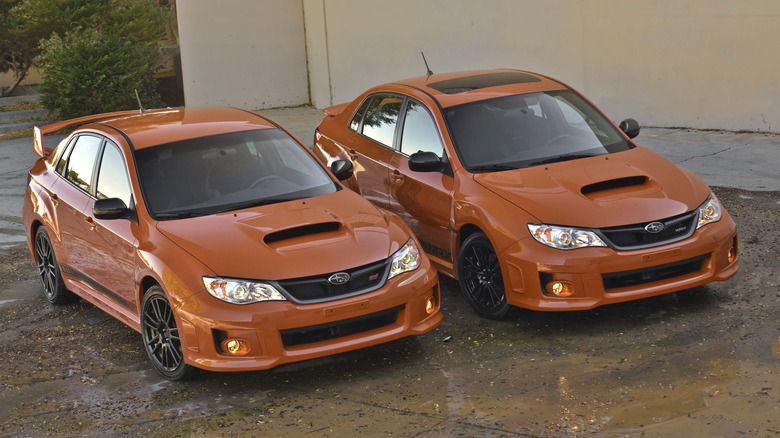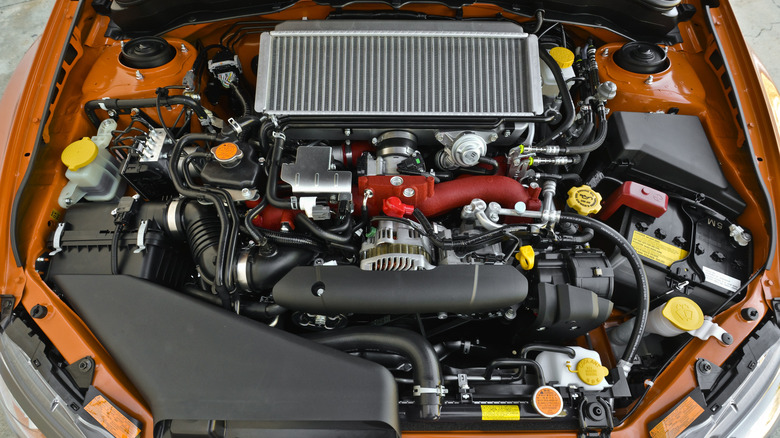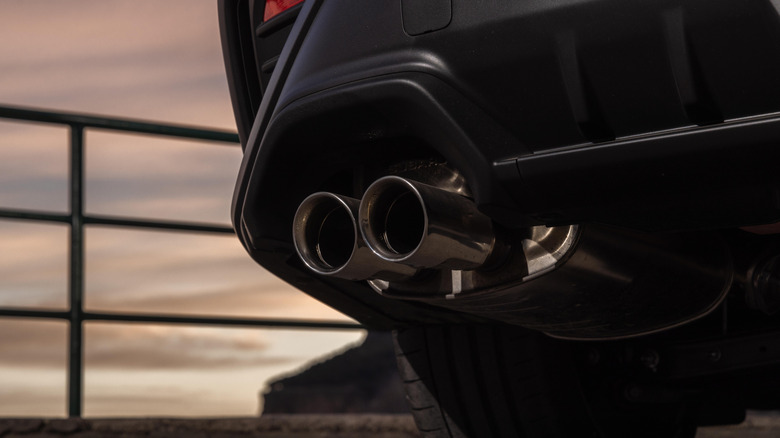How Subaru's Unequal Length Headers Create That Distinctive Rumble Sound
If there's one thing most car enthusiasts associate with Subarus, it's that unique burbly sound their boxer engines produce. It's a sound unlike any other boxer, with Porsches and classic Volkswagens each having their own distinctive notes. How, then, does something like an air-cooled four-cylinder Volkswagen engine configuration sound so different to a Subaru's boxer engine, which is nearly identical in basic geometry and displacement? The answer lies in a the unequal length exhaust headers.
Exhaust is the main reason behind why most cars sound the way they do. Different exhaust components, such as manifolds and mufflers, can drastically affect the way a car sounds, and Subarus are no exception. Its uneven headers produce a noise akin to a deep, low rumble, and that's due to the way that sound propagates inside the exhaust pipe.
There's a long answer and a short answer to this, so to keep it simple, picture two unequal-length tubes. The first tube is longer than the other. Now, release four balls into each tube at the same time, two by two. These represent the explosions occurring inside the engine. What will happen?
Each of the balls dropped will reach the end at different times, because one tube is longer than the other. Therefore, the spacing between balls will be uneven, thus, you have an uneven sounding exhaust, since one header is longer than the other. It gets more technical than this with how sound waves react with one another, but that's the gist of it. Let's break it down further and talk about why Subaru uses these headers in the first place and how they work to produce the noise.
How the sound signature actually works
This ties in with how engines produce noise in the first place, with some manufacturers like Ferrari getting the science down to a veritable art form. Subaru is another such example, creating a distinctive note based on the way its exhaust manifold setup works. Audio technicians utilize these principles to either negate certain tones using noise cancellation, which is when two waves act against one another to produce a net zero, or waves add onto one another and enhance certain frequencies.
The same principle applies to a car's exhaust note, particularly that of a Subaru. A boxer engine features an even firing sequence, meaning if it had evenly spaced exhaust headers like a Volkswagen, it'd have an even-sounding exhaust note rather than the burbling sound. Instead, the sound waves interact with one another at staggered points because one side's exhaust has a longer distance to cover, meaning the sound exits in lumps, instead of a single, continuous note.
The other component to this is, of course, the exhaust pipes themselves. This relies on the Subaru having an offset exhaust pipe configuration that favors one side of the engine over another, so if you were to fit a setup with two equal-length headers, it'd eliminate the burble altogether. Not every Subaru has unequal length headers, of course, though there are aftermarket options for most models.
Why do Subarus use unequal length headers in the first place?
This is a compound answer that can be divided into two parts — the functional and the aesthetic. The latter answer is quite simple — Subarus are well-known for that distinctive noise, so why bother changing something so integral to the brand image? Moreover, it doesn't particularly hinder performance, though there is a minor discrepancy between unequal and equal-length headers on boxer engines. So the short, speculative answer here is that it sounds good and gives Subaru models a certain identity.
Outside of that, however, comes another speculative reason. While Subaru never released any definitive statements regarding why the company sticks with this configuration, it's reasonable to assume that it could be a real estate factor.
Boxer engines are designed in such a way that they offer a far lower center of gravity than most other engine types, because all the working bits are on the bottom. That leaves little room for the exhaust, however, so it could just be a matter of space-saving to fit a single larger exhaust pipe and offset it to one side.
In either case, the sound of a Subaru boxer has defined the company's bread and butter engines for decades, and likely will continue sounding just as distinctive well into the future. Sadly, it's becoming rarer as time goes on, though, thanks to the departure of the famous EJ engine family.


